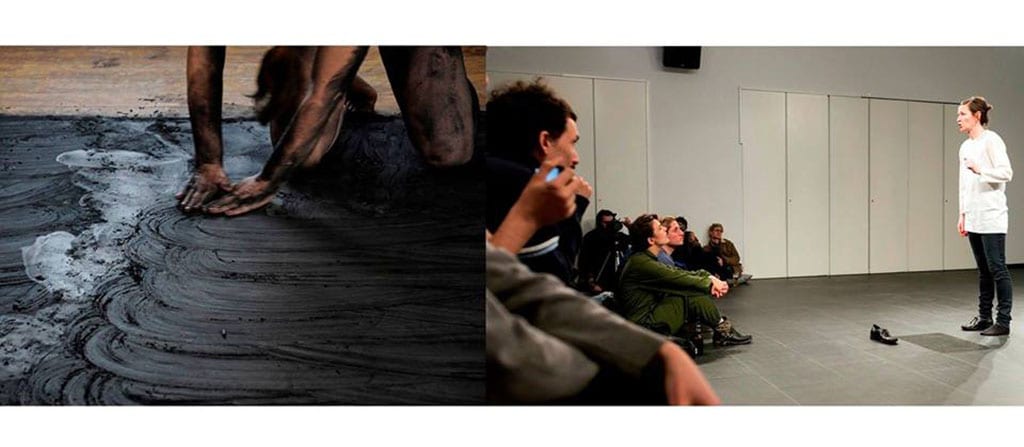For this double bill, the Tramway pairs up two performances dealing with space, things, and the traces they leave behind through language and dance.
In Black, created and performed by Norwegian artist Mette Edvardsen since 2011, things are made to come into existence by acts of denomination. The artist describes the things in her home, or rather, names them. Each name is repeated eight times. Moving through the empty space, Edvardsen follows the straight edge of a table with her hands, crouches to caress a plant at her feet, looks at the circle left by a cup of coffee. There are no things to be seen. ‘Hocus Pocus.’ Name the things, and there they are.
Repetition does not mean immobility: defeating the speaker’s statement that things don’t change, objects turn out to be treacherous. Humour, or, at least, a conscious sense of absurdity, occasionally breaks through, in the mere exhaustion that comes from the effort to repeat words (try to say ‘fork’ or ‘window’ eight times), or in a sulky refusal to answer a doorbell.
After the show, I eavesdropped on members of the audience starting to repeat things eight times. The exercise is difficult: the tongue slips, you feel slightly silly. If Black is about things, it is also about language: how many times do you have to repeat a word – say, fork or window – for it to turn into a thing, or to become worn out, comical, or absurd? Does it have to be eight, or more, or less? Overall, Black is short (30 minutes) and occasionally playful, but intellectually demanding.
what remains and is to come deals with bodies. Since its creation in 2011, the piece has been complemented with a book (what remains and is to come: a document, 2014). The two performers, Rosanna Irvine and Katrina Brown, walk freely among the audience. The space is empty except for large sheets of paper, placed on the floor at regular intervals, some of them covered in charcoal powder. The dancers’ naked bodies roll on the paper and become gradually covered in black to the sound of slow, deep breathing designed by Tim Sayer.
The performers engage in a cyclical dance of creation and erasure, covering up the traces left by their bodies in the charcoal with new ones. Their movements liberate clouds of jet-coloured dust. The metaphor of death and regeneration is slowly carried out to its end.
The piece draws on yoga, dance, and visual arts. It is a strong, thoughtful creation, but I am left wondering about its capacity to reach to the audience – me, in this case. Indeed, both Black and what remains and is to come tread the fine line between intellectual and emotional response, but also that between conceptual complexity and solipsism. At the end of the evening, I was feeling more questioning than moved, and more puzzled than shaken.

